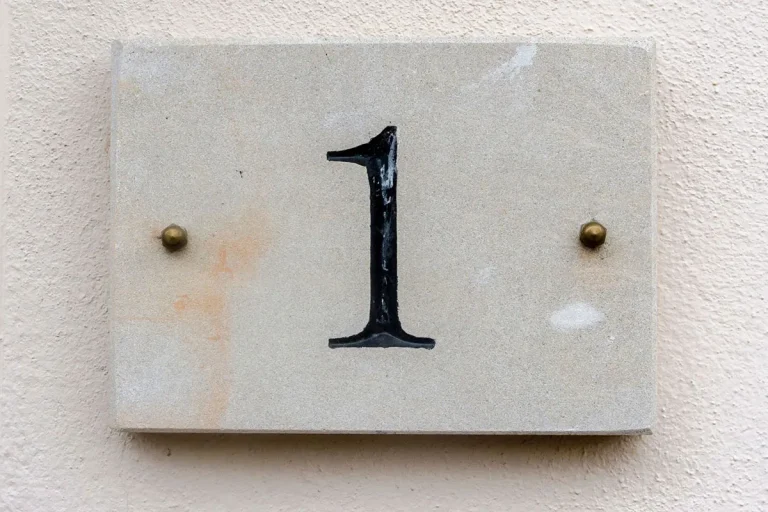St. Patrick’s Day holds a much deeper meaning than just wearing green and celebrating with Irish fare and drinks. At its core, March 17th commemorates Saint Patrick and his life of unwavering faith while spreading Christianity throughout pagan Ireland in the 5th century.
The full spiritual significance of St. Patrick and the holiday named for him includes themes of Christian devotion, using challenges to strengthen conviction, the human will to convert despite risk, and the ultimate victory of light over darkness.
If you’re looking for a quick overview, the spiritual meaning of St. Patrick’s Day involves celebrating the values embodied by Ireland’s patron saint: faith, bravery, and bringing light into the world.
In this in-depth guide, we will cover the full spiritual meaning behind St. Patrick and his venerable holiday by exploring his early life and tribulations in detail, the symbolism behind the shamrock, the driving force behind his risky endeavor to convert the pagan Irish, and why the color green came to be so associated with March 17th even today.
St. Patrick’s Early Life and Eventual Return to Ireland
Saint Patrick was born in the late 4th century A.D. in Britain. His father was a deacon and his grandfather was a priest. However, Patrick himself was not raised with a strong emphasis on religion. At the age of 16, Patrick was captured by Irish pirates who took him away to Ireland and sold him into slavery.
Patrick was forced to work as a shepherd, outdoors and away from people. He grew lonely and afraid during this time. It was then that Patrick began to turn to religion, finding comfort in his faith. Though Patrick came from a religious family, it was not until he faced adversity that he truly connected to God.
After six years of slavery, Patrick escaped and found passage on a ship back to Britain. However, he did not remain in Britain for long. According to his writings, Patrick began having visions of the people of Ireland calling out to him to come back.
He felt God calling him to return to Ireland as a missionary.
Patrick’s Return to Ireland
Sometime around the year 432 A.D., Patrick returned to Ireland, traveling over land and sea to a place he had only known as a slave. He understood the danger involved, as he could have been killed or enslaved again. However, his trust in God compelled him forward.
Patrick approached leaders and wealthy landowners to gain their support for converting Ireland to Christianity. His ability to speak Irish from his time as a slave proved valuable and allowed him to communicate clearly.
There were already small groups of Christians living in Ireland, so Patrick worked to organize them into communities and build churches across the countryside.
Patrick was quite successful at winning converts and he is even said to have baptized thousands of people. He incorporated traditional Irish symbols into teaching about Christianity, which helped the Irish people relate to it.
This also allowed sacred sites like springs, trees, and stones to become part of Christian tradition in Ireland rather than being destroyed as pagan idolatry.
Some legends tell of Patrick banishing all the snakes from Ireland and chasing off assorted demons and harmful fairies. While actual historical details are sparse, there is no doubt Patrick made a tremendous impact bringing Christianity to Ireland during his 30 years there as a missionary.
The Shamrock as a Symbol of the Holy Trinity
The shamrock, a three-leafed clover native to Ireland, has long been used as a symbol for St. Patrick and Ireland in general. But it also carries religious meaning as an illustration of the Holy Trinity in Christianity – the Father, the Son, and the Holy Spirit as three divine persons in one God.
The concept of the Holy Trinity is central to Christian belief yet remains somewhat mysterious and difficult to grasp. St. Patrick famously used the shamrock as a metaphor to explain the strange concept of three-in-one to the pagan Irish during his missionary work in the 5th century.
Just as the shamrock has three leaves bound by a single stem, the Holy Trinity consists of three distinct persons – God the Father, Jesus Christ the Son, and the Holy Spirit – bound together in one supreme Being.
Each leaf is equally part of the whole shamrock, just as each Person plays an equal part in the Godhead.
By presenting this familiar three-leafed plant that the Irish people saw regularly in their landscape, St. Patrick provided an easy-to-understand aid for understanding the paradox of the Trinity. The memorable visual concept stuck, and the shamrock soon became a ubiquitous symbol among Irish Catholics as a reminder of the mystery of the Triune God.
Beyond Catholicism, the shamrock represents the Holy Trinity for many other Christian denominations in Ireland as well. Protestant churches throughout the country display shamrocks to signify that they share the same belief in the Triune God as their Catholic counterparts.
So while to the rest of the world, the shamrock is a lighthearted emblem of St. Patrick’s Day associated with clovers and good luck, to the Irish it has a profound spiritual meaning. When Irish Catholics spot the familiar three-leafed shape, it often serves as a visual cue reminding them of core beliefs at the very heart of their faith.
The shamrock’s triple leaf speaks to the incomprehensible, paradoxical, and yet profoundly important Christian doctrine of the Holy Trinity. St. Patrick’s clever use of the humble plant as a living metaphor made the concept real and accessible to newly converted Irish pagans.
And it continues to prompt reflection on the Triune God today when spotted in Irish landscapes or featured in St. Patrick’s Day displays.
Bravery and Unwavering Conviction in Spreading Christianity
St. Patrick demonstrated immense courage and an unshakable faith as he returned to Ireland to spread Christianity across the country. Despite having been held captive there for 6 years as a young man, he boldly ventured back to the land of his enslavement to bring the Irish people the light of the Gospel.
As a missionary, St. Patrick faced considerable personal dangers preaching the Christian message in a pagan land. He had to gain the trust of tribal kings and deal with hostile druids who felt threatened by his teachings.
According to legend, he even confronted the warriors of King Loegaire by lighting the Paschal fire on Slane Hill before the pagan festival of Beltane. This defiant act showed that St. Patrick’s devotion to God triumphed over earthly fears.
The brave saint persevered in spreading the faith across Ireland’s rugged landscapes for over 30 years. He had a spirit that was unwavering in its conviction despite deprivations and threats of violence.
By standing firm in his beliefs and commitment to serving God, he inspired countless converts who helped advance Christianity in Ireland.
Some key highlights that illustrate St. Patrick’s inspirational bravery include:
- Withstanding harsh weather conditions like rain and snow as he traveled on foot across Ireland
- Facing angry pagan crowds that attacked and assaulted him several times
- Persisting after his writings and holy items were destroyed in raids by bandits
- Joyfully returning to preach in places where he had been previously enslaved
In one dramatic example, St. Patrick confronted King Loegaire and his druid advisors at Tara. He lit a Paschal fire at Slane before they could kindle their own ritual Beltane fires. Enraged, the king sent troops to march St. Patrick to Tara for execution.
But along the way, according to legend, the saint softened Loegaire’s heart through hymns and prayers. By the end, the king knelt and believed in Christ.
Such accounts of standing firm in faith despite persecution or threats show how St. Patrick embodied spiritual courage. For over 30 years, he displayed grit, tenacity, and zeal in spreading Christianity’s message of love and redemption throughout Ireland.
In one prayer attributed to the saint now known as St. Patrick’s Breastplate, he gloriously declares:
“I bind unto myself today, the strong name of the Trinity”
“I bind unto myself today, the virtues of the starlit heaven”
“Christ be with me, Christ before me, Christ behind me, Christ within me”
These words powerfully express an unwavering conviction in God’s strength and grace. They helped inspire generations after St. Patrick to draw courage from spiritual faith in times of hardship or danger.
The saint’s own sense of duty and bravery in serving God shone as a guiding light during Ireland’s conversion.
Today, as we celebrate St. Patrick’s Day with revelry and joy, we should also remember the deep spiritual courage, conviction, and sacrifice it took to bring Christianity to the Emerald Isle. Just like the saint who drove the snakes out of Ireland, we too can stand firm no matter the difficulties when empowered by brave faith.
Rebirth and Rejuvenation Themes Tied to Spring
The spring season has long been associated with themes of rebirth, renewal, and rejuvenation in many cultures and spiritual traditions. This symbolism connects to St. Patrick’s Day as it falls right at the cusp of winter turning to spring in the Northern Hemisphere.
The vernal equinox, marking the first day of spring, usually occurs around March 20-21 in the Gregorian calendar. St. Patrick’s Day on March 17 therefore comes right at a time when the numbing cold of winter is thawing into the promise of life and regeneration spring heralds. The burgeoning greenery, warmer sunlight, and awakening hibernating animals all signal natural revival.
This intrinsic link between spring and revitalization tied into spiritual worldviews across lands and eras. Ancient pagan cultures celebrated spring with equinox festivals marking the triumph of life’s victory over death after winter’s symbolic demise.
Celtic polytheism, popular in Ireland before Christianity, also held spring rites for renewal.
Christianity absorbed some pre-existing spring symbolism into Easter and Lent preceding it. Easter epitomizes rebirth through Jesus’ resurrection after crucifixion. Lent’s 40 days represent Christ’s temptation fast and the Israelites’ desert preparatory pilgrimage into the Promised Land — a journey into spiritual renewal and salvation.
As Christianity spread through the pagan Celtic lands, the redemption story intertwined with indigenous customs heralding spring’s restoration. St. Patrick likely co-opted the pre-Christian spring resurrection motifs into Christianity. Hence, the Irish infused St. Patrick’s Day with festivities we still echo today — wearing green for verdant regrowth, parades mirroring ancient ceremonial processions, feasting on bacon and cabbage as symbolic seasonal produce.
Therefore, St. Patrick’s Day assimilates not just Irish heritage but also the universal spiritual significance of spring renewal. The famous shamrock St. Patrick used wasn’t just an Irish clover but a metaphor illustrating Christianity’s Trinity to the pagans.
Its three leaves symbolized rebirth phases from death back into life — precisely the cyclical regeneration spring evokes between winter and summer.
The timing of St. Patrick’s Day within Lent is also notable from the renewal vantage point. Lent’s fasting and sacrifices ritually cleanse to prepare hearts for Easter’s reboot into Christ’s resurrection.
St. Patrick’s Day interestingly interrupts this spiritual detox with recess merriment before finishing Lent. Like how a fever’s crisis precedes healing, St. Patrick’s Day may represent touching rock-bottom before rising transformed.
Conclusion
The deeper spiritual meaning behind this long-revered saint and his namesake holiday involves celebrating faith against all odds, unwavering conviction, and ultimate victory of light over darkness. We honor Saint Patrick every March 17th by wearing green, preparing Irish inspired meals, and tipping a pint of beer.
While these modern traditions seem far removed from the 5th century missionary, it’s important we take time to reflect on and uphold the noble human values embodied by this legendary icon: bravery to take risks against adversity, commitment to ideals beyond oneself, and determination to spread light where once there was only shadow.






